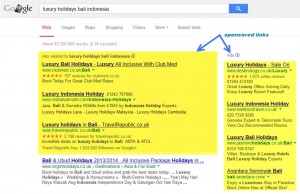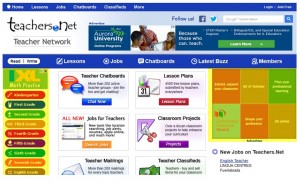Paid Advertising Part One – AdWords and AdSense
I’m always going on forums and on social networks to see which topics people are curious or confused about when it comes to doing business online. This is how I have found that Paid Advertising poses loads of questions and it’s easy to understand why. There’s AdWords, AdSense, PPC, CPC and so on. While these words all describe paid advertising, they all mean different things. This is where the confusion begins.
Well, let’s cut the clutter with this Paid Advertising 101: a complete guide to understanding what AdWords, AdSense, PPC and CPC are, who uses them and what for.
So, in Part One we’re going to cover AdWords and AdSense – two different advertising services, while in Part Two we’ll take a closer look at PPC and CPC so you can get a better understanding of these two concepts.
Ready? Here we go…
What is AdWords?
AdWords (Google AdWords) is an advertising service by Google for businesses wanting to advertise on Google and its ad network. In other words, you create an advert and pay to place it on Google’s search results page.
For example, say you are selling luxury holiday packages for Bali, Indonesia. You sign up for an AdWords account and create a campaign where you target the keyword “luxury holidays in Bali”. When I run a search for “luxury holidays bali Indonesia” I should be able to see your advert at the top, in Google’s paid ads (highlighted below).
The other Google search results (not the yellow bits) are free, often called ‘organic’, but it can take months if not years to get your website to show up there, especially when you have a lot of competition. With AdWords, your business can instantly be on the first page of results on Google when someone searches for your products or services.
When you’re using AdWords you are able to set a budget for advertising and only pay when people click your ads. The ad service is largely focused on ‘keywords’. You need to work out what words (keywords) people will search with when looking for the kind of products or services that you sell. And you then need to create an ad that will show up when people search on Google using these words. The word then triggers your ad to be shown on the results page, either above the free, organic Google search results or on the right-hand side. When people click your ad, they are then directed to your website.
Your choice of keywords plays a part in how much AdWords costs. As an advertiser you place a ‘bid’ – an amount you are willing to pay Google when someone clicks on your ad, after they have searched with a keyword. The position you show on the results page depends on your bid, and of course the bid of all the other advertisers. If they bid more than you then you tend to appear lower than them. The amount you need to bid to appear high on the page varies depending on the keyword. Popular words have lots of advertisers, so you need to bid much higher to appear.
AdWords is the platform that allows you to create ads that will appear in Google’s search result pages.
For more information on how to get started, check out the Google AdWords Help.
What is Adsense?
AdSense (Google AdSense) is an advertising placement service from Google that enables website publishers to display targeted text, video or images adverts on their site and earn money each time one of their visitors view or clicks an ad. The ads are controlled and managed by Google.
Here is an example below:
Publishers just need to create a free AdSense account and then copy and paste a code into their site to be able to start displaying the ads. Publishers get revenue on per-click or per-impression – in simpler words, when their visitors click or view an ad.
Google offers various AdSense programs depending on the type of content you’d like to display on your site. Here are the most popular ones:
- AdSense for content: display ads on a website
- AdSense for search: display ads in search results on a website
- AdSense for mobile: display ads on a mobile site
- AdSense for feeds: display ads in RSS feeds
- AdSense for domains: display ads on unused domains
AdSense is a useful platform for publishers looking for efficient ways to get revenue by displaying ads on their site or blog.
For more information on how to get started, check out the Google AdSense Help.
What’s the difference between AdWords and AdSense?
While Google AdWords delivers ads to its search engine results page when people run a search, Google AdSense delivers ads to individuals’ websites. With AdSense, web publishers get revenue when users click or view ads. So, the main difference between the two is that AdWords is used by advertisers while AdSense is used by publishers.
AdWords allows individuals and businesses to advertise on Google’s search engine, the Google Search Network (including sites such as AOL search and Ask.com) and the Google Display Network (content sites that are not search engines). AdWords is used to drive targeted traffic to business sites with the purpose of converting that traffic into sales. Advertisers pay Google a specific amount for each ad click.
AdSense, on the other hand, enables publishers to monetise their sites and blogs and earn revenue from relevant AdWords ads displayed on their sites or blogs, next to their content. Each time an ad is viewed or clicked, the publisher receives an amount of money. This can be a simple way to earn money if you have many readers.
While with AdWords you pay for your ad to appear in results pages, with AdSense you get paid for displaying ads on your own website.
I hope this short guide has helped you understand what AdWords and AdSense mean and how you can use them to advertise on the Internet. Have questions? Go ahead and share them in a comment below.


